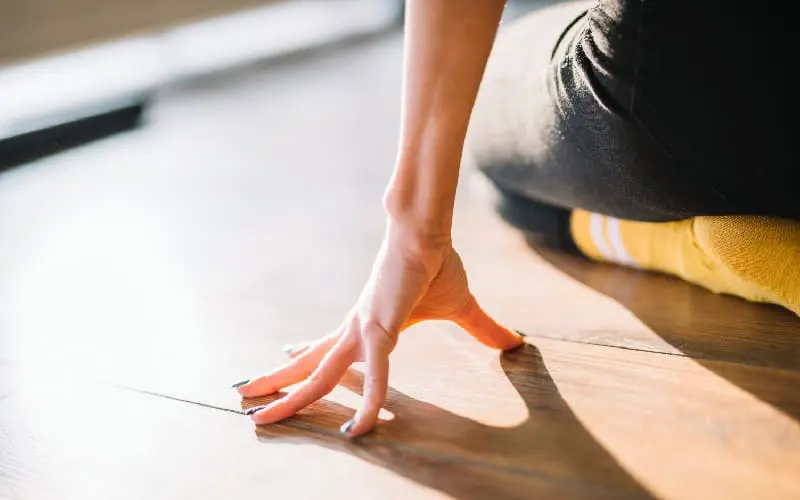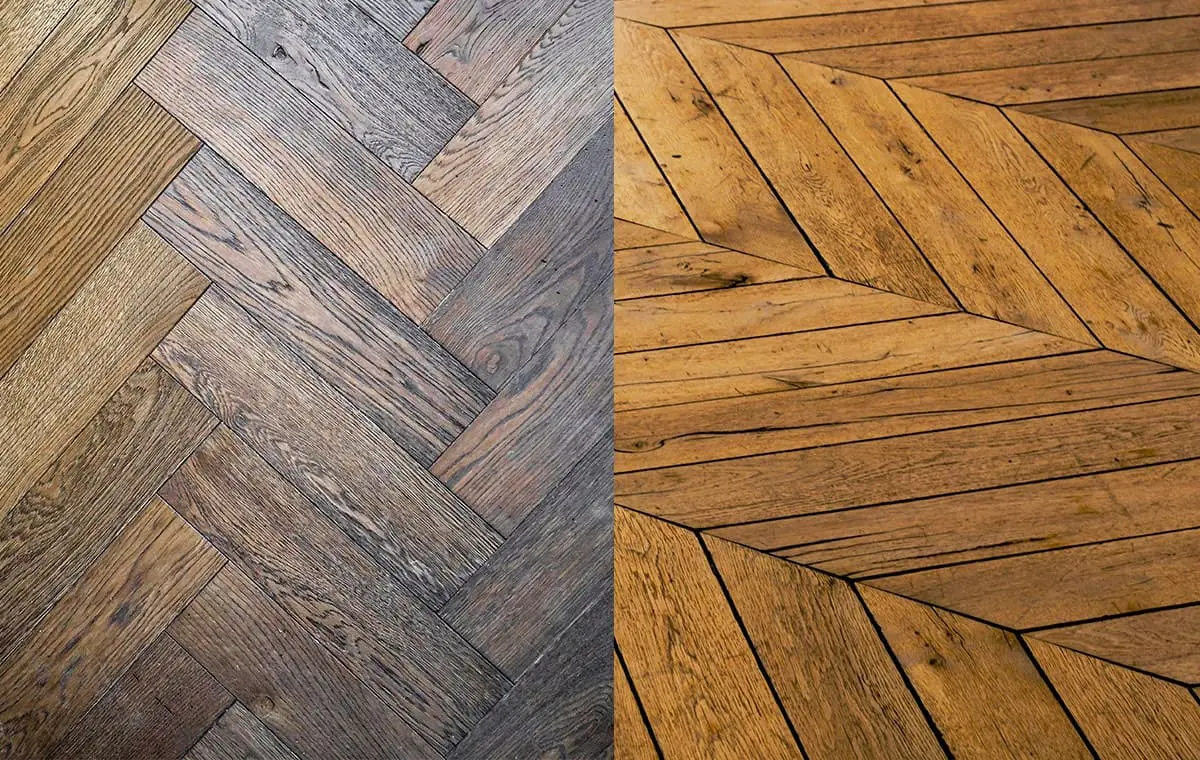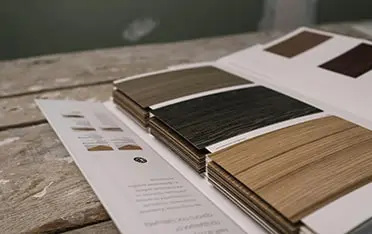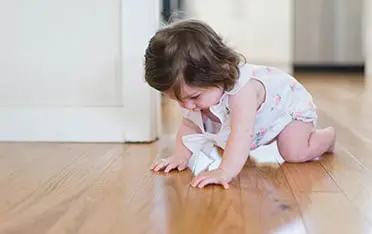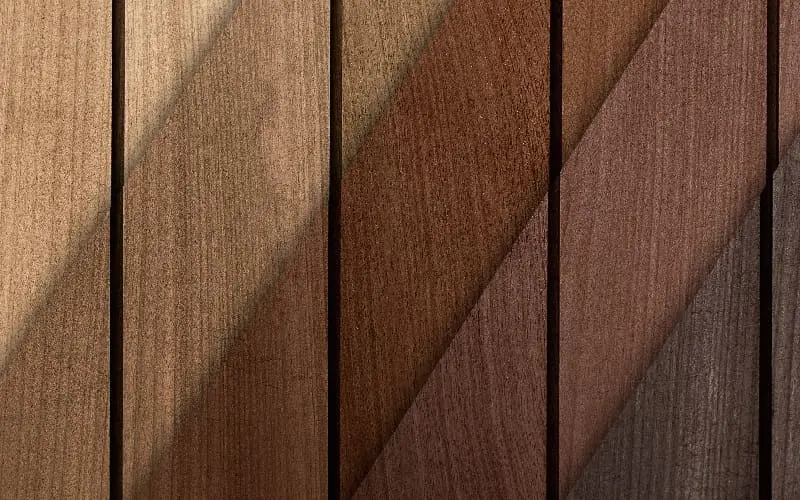A peeling laminate flooring can be frustrating, especially when it ruins the look of your space. But the good news is, you don’t always need to replace the whole floor. With the right steps, you can fix the peeling parts and make your flooring look good again. Flooring Surgeons is here to guide you through simple and effective ways to handle it.
What Is Laminate Flooring? A Complete Guide for UK Homes: Fixing a Peeling Laminate FloorReasons for Peeling Parquet
Peeling parquet is not unusual, but there are always reasons behind it. Knowing what causes the problem can help you fix it or stop it from happening again. Here are some common causes:
1. Moisture
Too much moisture from spills, leaks, or high humidity can damage the floor. It makes the wood swell and the surface peel. Keep the room dry and clean spills fast.
2. Poor Surface Prep
If the floor wasn’t sanded or cleaned properly before finishing, the top layer won’t stick well. Over time, it starts to peel.
3. Bad Finishing Products
Some products don’t work well together. For example, using water-based finishes over oil-based stains without proper prep can cause peeling.
4. Dirty Surface
Waxes, oils, or old cleaners left on the floor can stop the finish from bonding. Always clean the surface well before refinishing.
5. Cheap Materials
Low-quality parquet may peel faster. Spending a little more on good materials can save you trouble later.
6. Sunlight or Heat
Too much sunlight or changing temperatures can break down the finish. Close curtains to protect the floor.
Is Peeling Parquet Worth Repairing?
Yes, peeling parquet is worth repairing—especially if the damage is in small areas. You don’t always need to replace the whole floor. If the boards underneath are still strong, a simple repair can improve how your floor looks and lasts. If you don’t know how to fix it, contact us right away.
How to Repair Peeling Wood Floor
Peeling or damaged wood floors might look quite unattractive, but you can fix them without redoing the whole floor. Here’s a simple way to repair deep gouges or peeling spots using easy-to-find materials.
Step 1: Tools and Materials You’ll Need for Repair
To repair peeling wood floor, you’ll need:
- Damaged Wood Epoxy — Fills deep gouges or peeling spots. It hardens strongly and acts like real wood.
- Painter’s tape — Protects the surrounding area while you work. Keeps the epoxy and stain where they belong.
- Sandpaper (80 grit and 120 grit) — Shapes and smooths the repaired area. 80 grit is for rough shaping, 120 for fine smoothing.
- Gloves and rags — Keep your hands clean and help with wiping off dust and excess stains.
- Wood stain (get a few shades close to your floor) — Helps you match the patch to your floor. Mixing shades gives a closer match.
- Foam brush — Applies the stain evenly and helps blend the color into the rest of the floor.
- Wipe-on polyurethane — Seals the patch and blends the finish with the rest of the flooring. Gives it a clean, finished look.
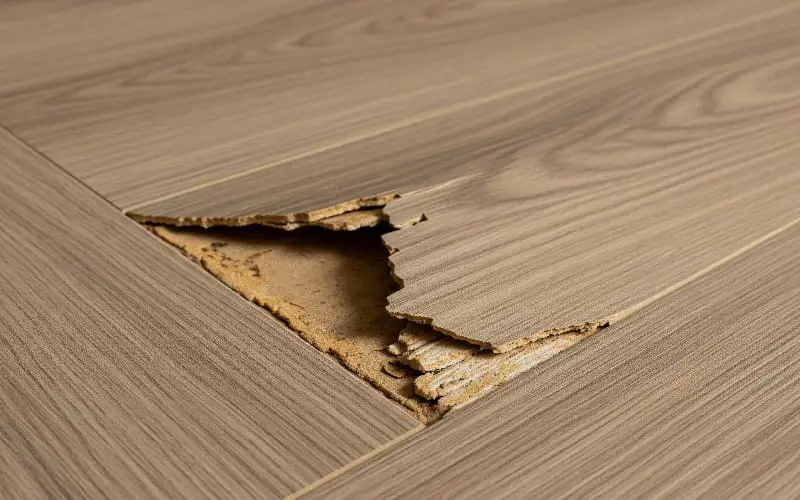
Step 2: Tape Around the Damaged Area
Use painter’s tape to cover the area around the gouge. This keeps epoxy and stains off the rest of your floor.
Step 3: Mix the Epoxy
Take equal parts of epoxy and hardener and knead them together until the colour is even. You’ll have about an hour to work before it hardens.
Step 4: Fill the Gouge
Use a putty knife to press the epoxy into the damaged spot. Get it smooth, but it doesn’t need to be perfect—you’ll sand it later.
Step 5: Let It Dry
Let the filled area dry for 24 hours.
Step 6: Sand the Area
Start sanding with 80 grit to shape the repair. Don’t sand the finished wood around it. Switch to 120 grit to smooth it out. Feather the edges well so it blends.
Step 7: Carefully Remove Tape
Peel the tape slowly to avoid damaging the surrounding finish—especially if the floor is old.
Step 8: Wipe Clean and Stain
Clean off all dust. Then, mix stains to match your floor colour. Apply it gently with a foam brush. Use light, uneven strokes to mimic wood grain.
Step 9: Add a Finish
Once the stain dries, use a small amount of wipe-on poly to blend the patch with the surrounding finish. No need to redo the full floor—just touch up the area.
Final Result
Your repair should blend in well. It may not be perfect, but it gives your floor a cleaner look and adds years of life without the need for full sanding.
Conclusion
Peeling parquet may look bad, but it doesn’t mean you need a full replacement. With the right tools and a bit of time, you can fix small damaged areas yourself. It’s a simple way to bring life back to your floor. If you are not sure where to start, Flooring Surgeons is here to help.



